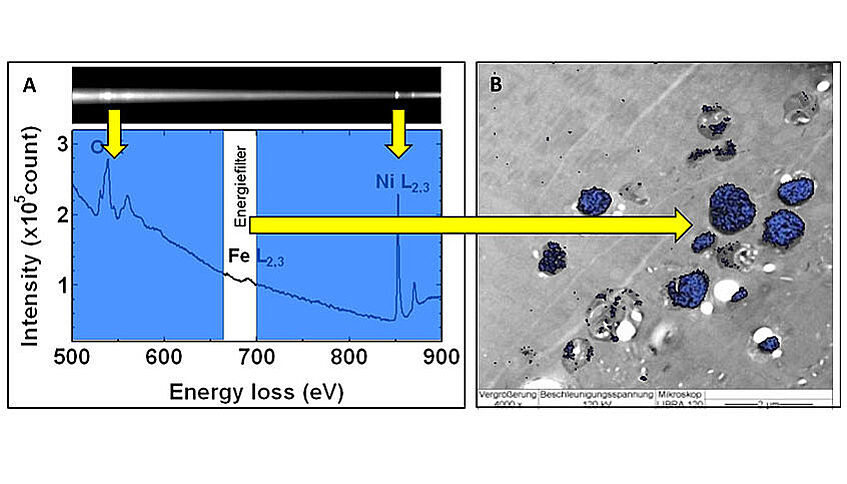Spectroscopic Methods (EDX, EELS)
In both, SEM and TEM, by-products of the beam interaction with the sample can be used for element analyses: Inelastic scattered incident electrons lead to an excitation of a sample atom by kicking a shell electron in a higher energy level.
In the SEM we use the characteristic X – rays generated by interaction of the beam electrons with the shell electrons of the sample. An electron of the sample gets ejected and is replaced by an electron of an outer shell. The difference in energy is released as characteristic X-ray. A silicon drift detector converts the radiation to an electric signal. EDX (Energy Dispersive X-Ray Spectroscopy) is suitable for element heavier than Lithium.
In the TEM the energy loss of the incident electron is analyzed. Therefore, after traversing the sample, the beam electrons pass a magnetic prism spectrometer and are deflected according to their kinetic energy. The EELS (Electron Energy Loss Spectroscopy) provides a high sensitive element detection and can be used as well for element mapping in the ESI (Element Spectroscopic Image) mode.
Both the X-ray in the SEM and the electron energy loss on the TEM are specific for the energy levels of the shell electron of each element and show typical ionization edges. Both methods are semi-quantitative.

SEM: EDX / Dotmapping

TEM: EELS / ESI
